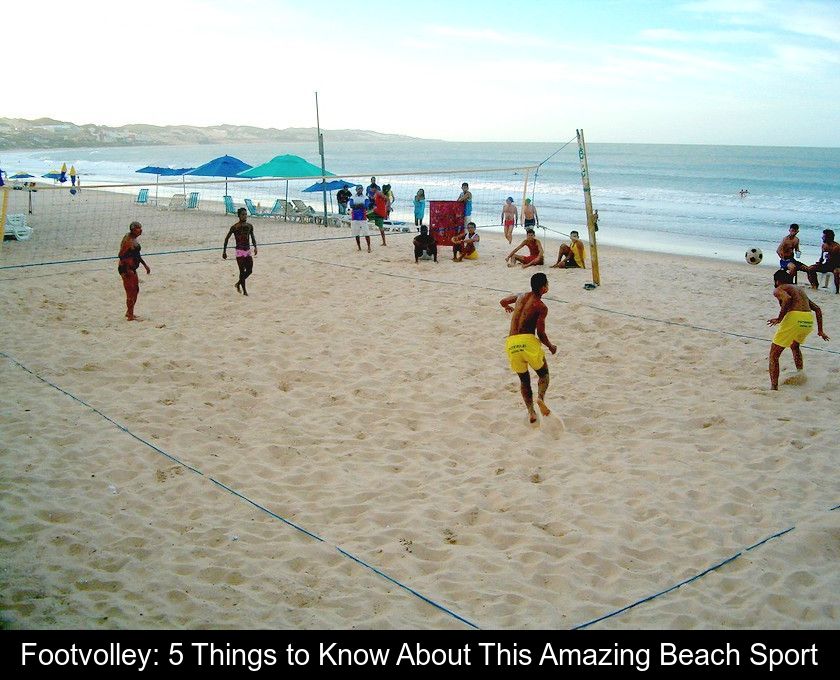Footvolley: 5 Things To Know About This Amazing Beach Sport
Summer is the perfect season for playing footvolley, a team sport that lives up to its name! Indeed, it is on the beach that enthusiasts gather to play this ball game, which borrows some of its rules from football and others from volleyball. Here are 5 things to know about this increasingly popular beach sport.
1- This sport is an amazing mix of beach volleyball and football.
As its name suggests, footvolley is a team sport that in some ways resembles volleyball and in others football! This game shares certain characteristics with beach volleyball since it is played on the beach and players must send the ball over a net to score a point.
However, the difference is significant: they must not perform this action with their hands or arms as volleyball players do. Just like in football, it is forbidden to touch the ball with these two parts of the body.
Players can use all other parts of their body (their feet, thighs, chest, shoulders, or head), which sometimes leads to spectacular acrobatics and slides!
2- Footvolley was invented in Brazil.
The cradle of footvolley is Brazil, and it is no surprise given this country's reputation for its love of football and its beaches. More specifically, it was on the famous Copacabana beach in Rio de Janeiro that this sport was invented in 1965.
This game is said to have been conceived by professional football players to circumvent the ban on playing during the summer break, taking advantage of the available beach volleyball courts.
In the 1970s, this game spread to other cities in Brazil, before conquering beaches on all continents, from Spain to Thailand, including South Africa!
3- Players must not use their hands or arms.
Footvolley matches are played two against two on a court measuring 18 meters long and 9 meters wide.
As we mentioned earlier, players are not allowed to use their hands or arms to pass the ball over the net. This net, called calleboudier, is set at a height of 2.20 meters for men's competitions and 2 meters for women's competitions.
Each player must make only one touch before passing the ball, and the team can make a maximum of three touches in the exchange.
Points are awarded:
• if the ball touches the ground in the opponent's court.
• if the opponents commit a fault.
• if the opponents fail to return the ball.
4- This game is all the rage on beaches around the world.
Because it is both playful and spectacular, footvolley is all the rage on beaches around the world, particularly on the beaches of Tel Aviv in Israel.
In this country, this ball game that requires agility and strength has become a true social phenomenon. Players train like real athletes and maintain their reflexes, sense of balance, and flexibility by jogging on the sand, doing weight training, and practicing yoga or Pilates!
Young Israelis are not the only ones who have been won over by this beach sport. Since the 2000s, local or international competitions have been organized outside Brazil, in the United States, Spain, Portugal, Thailand, South Africa, and even Corsica...
Corsica is the first French region to have adopted footvolley.
Even though footvolley is still relatively unknown on the beaches of mainland France, this sport is already well established in Corsica, particularly on the southwest coast, in Cargèse, Ajaccio, and Piana.
For over ten years, a tournament has been organized on Sanguinaires beach in Ajaccio to kick off the summer footvolley season.
Another proof that Corsica has fallen in love with this game is that the final of the next European Championships will be held in Bastia on August 29, 30, and 31, 2024. This spectacular event will take place on Saint-Nicolas Square, which will be transformed into a giant beach for the occasion.






